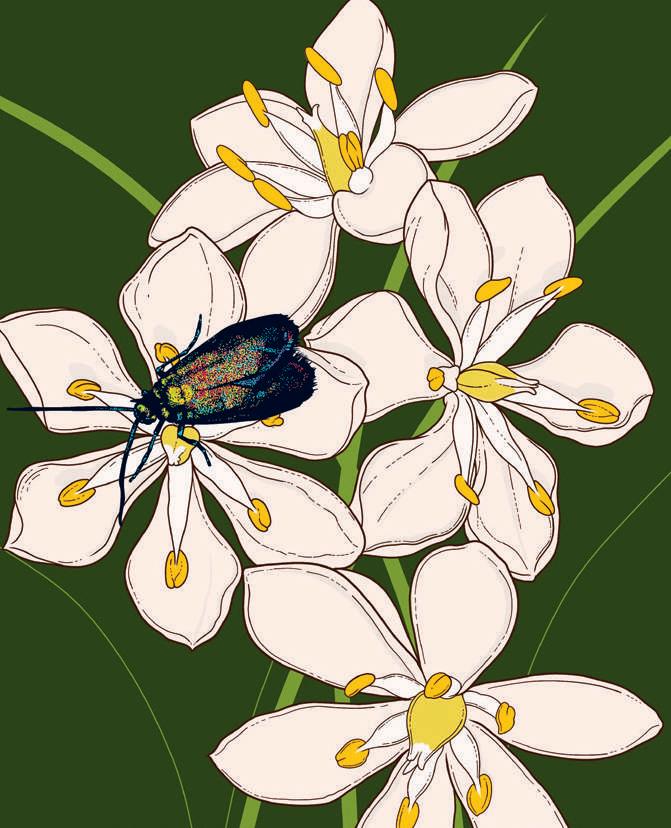
1 minute read
Wonga Wonga Vine
~ Pandorea pandorana ~
Wonga can mean vine in the Dharug language
Advertisement
BIGNONIACEAE
Pandorea pandorana (pronounced with pizzazz) stems from the family of Bignonias, which mainly feature bellowing blooms in bell and trumpet shapes. At the family table the Wonga Wonga Vine sits next to the infamous (and, surprisingly to most, not native) Jacaranda tree. Its abundant spray of trumpeting flowers and climbing abilities make this vine a fantastic garden companion.
WHERE TO LOOK
Wonga Wonga Vine is widespread in eastern Australia from the tip of Cape York to the tail end of Victoria. It’s also seen in Central Australia, the Bass Strait islands and Western Australia. It’s usually associated with coastal rainforest, but can also be found in moist gullies, sandy coastal soils, woodlands and scrambling about rocky sites. It may be harder to notice in forests as it climbs high into the canopy.
Locations → Queensland: Magnetic Island, Mary Cairncross Scenic Reserve and D’Aguilar National Park; NSW: Blue Mountains National Park and New England National Park; Victoria: Gippsland Plain; NT: Mparntwe (Alice Springs).
FEATURES
This rambunctious scrambling and climbing vine grows tall and broad, up to at least 6m high. It has long, twining, woody branches and pointed, dark glossy green leaves up to 15cm long. Its fragrant tubular flowers, around 2cm in size, cascade in groups of droopy skirted bells, usually creamy-white with purplish markings in their throats. Its large seed pods grow 3–8cm long and are pointed and filled with papery seeds.
FLOWERING SEASON
Spring → This perennial evergreen keeps its waxy, glossy leaves all year and flowers for two to three weeks between August and October. Depending on the environment, blooms might be seen until summer. The flowers that tumble from the plant in great trumpeting bursts are well worth the year-long wait.
TRADITIONAL USES
Its flexible wood has been used by the First Nations People of the Central and Western deserts for making woomeras, a spear-throwing tool.
PLANTING
A hardy plant, this vine is always ready to climb. Train the Wonga Wonga to scramble up something like a fence or lattice. Its paper seeds are easily germinated without pre-treatment and cuttings can be taken while pruning after flowering. It prefers clay or sandy soils in full sun to part shade. Plants are widely available through specialty nurseries.










